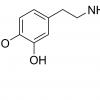http://www.latimes.c...0,6344202.story
From the linked journal in the article:
Abstract
Background and Purpose—Stroke is the leading cause of long-term disability in the United States, yet no drugs are available that are proven to improve recovery. Brain-derived neurotrophic factor stimulates neurogenesis and plasticity, processes that are implicated in stroke recovery. It binds to both the tropomyosin-related kinase B and p75 neurotrophin receptors. However, brain-derived neurotrophic factor is not a feasible therapeutic agent, and no small molecule exists that can reproduce its binding to both receptors. We tested the hypothesis that a small molecule (LM22A-4) that selectively targets tropomyosin-related kinase B would promote neurogenesis and functional recovery after stroke.
Methods—Four-month-old mice were trained on motor tasks before stroke. After stroke, functional test results were used to randomize mice into 2 equally, and severely, impaired groups. Beginning 3 days after stroke, mice received LM22A-4 or saline vehicle daily for 10 weeks.
Results—LM22A-4 treatment significantly improved limb swing speed and accelerated the return to normal gait accuracy after stroke. LM22A-4 treatment also doubled both the number of new mature neurons and immature neurons adjacent to the stroke. Drug-induced differences were not observed in angiogenesis, dendritic arborization, axonal sprouting, glial scar formation, or neuroinflammation.
Conclusions—A small molecule agonist of tropomyosin-related kinase B improves functional recovery from stroke and increases neurogenesis when administered beginning 3 days after stroke. These findings provide proof-of-concept that targeting of tropomyosin-related kinase B alone is capable of promoting one or more mechanisms relevant to stroke recovery. LM22A-4 or its derivatives might therefore serve as “pro-recovery” therapeutic agents for stroke.


















































